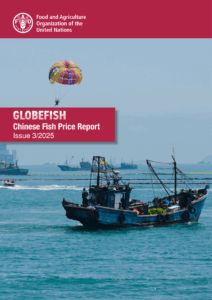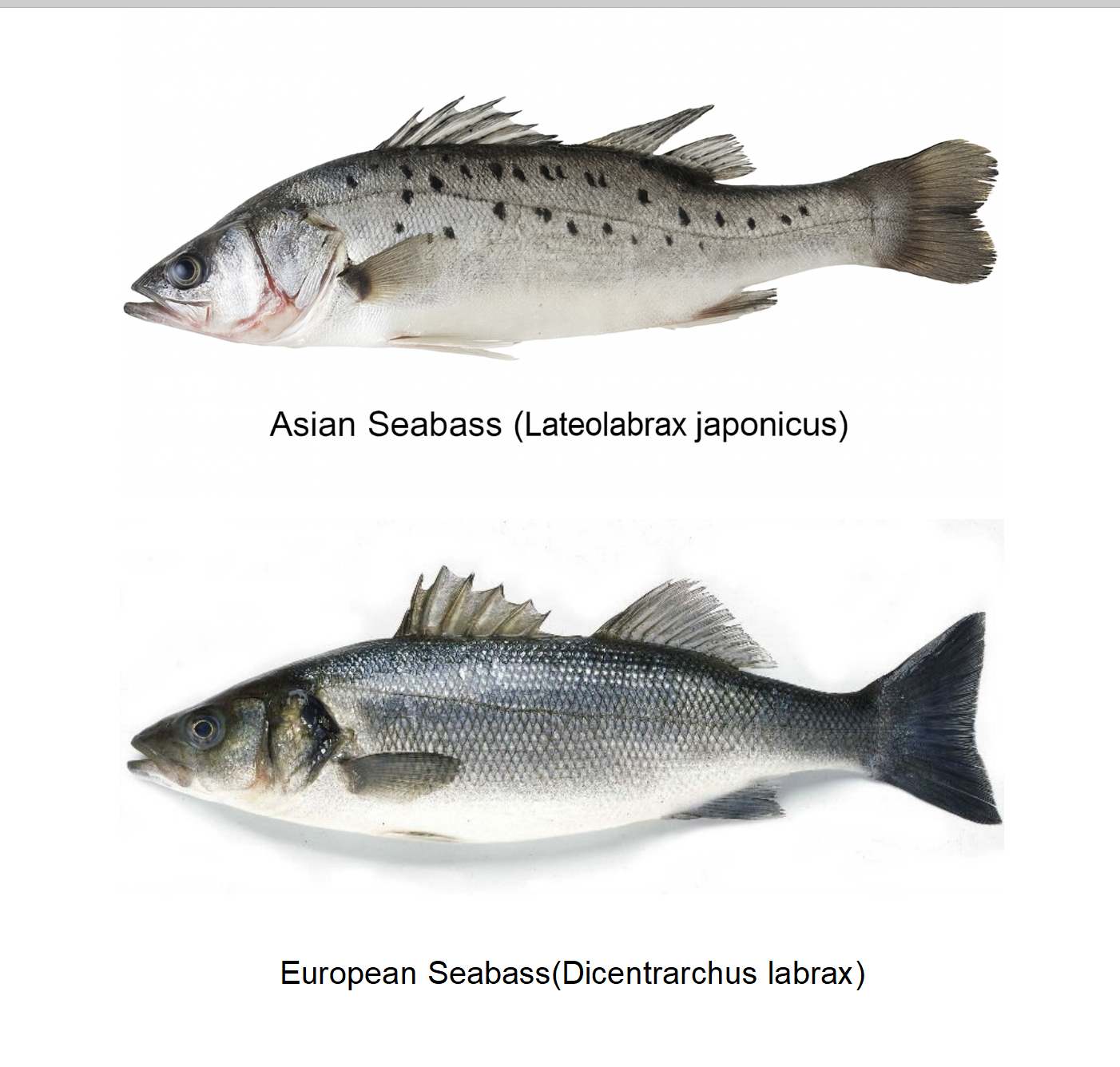🇨🇳 China Fish Price Report 2025 (Issue 3)

The “Fish Revolution” Redefining China’s Protein Landscape
While the public still debates whether pork or eggs will dominate this year’s dining table, another quiet revolution has begun — fish is emerging as the most dynamic protein source on China’s plate.
According to the “China Fish Price Report 2025 (Issue 3)”, jointly released by FAO GLOBEFISH and CAPPMA (China Aquatic Products Processing and Marketing Alliance), the country’s seafood market is evolving rapidly in production, consumption, and policy direction.
🐟 Fish Moves to the Core of China’s National Nutrition Strategy
FAO data shows global aquatic animal production reached 185 million tons in 2022, with 89% for human consumption. Global per capita seafood consumption hit 20.7 kg/year, but China alone produced 36% and consumed 45% of global seafood — more than 65 million tons.
Now, aquatic protein is officially part of China’s national nutrition plan.
According to The China Food and Nutrition Development Outline (2025–2030):
By 2030, per capita annual seafood consumption should reach 53.21 kg (fresh weight), equivalent to 29 kg of protein from aquatic products.
Consumption grew from 23.92 kg/person in 2013 to 34.27 kg in 2022, but still lags the target by 19 kg, leaving a 260-million-ton gap. That means over the next five years, China could add 50 million tons of new seafood demand annually — a shift that will reshape global fisheries.
🌆 Urban Eats “Expensive Fish,” Rural Eats “Less Fish”
In cities, ordering salmon sashimi or tuna steaks has become routine, but nationwide consumption remains highly polarized.
In 2022, urban residents averaged 39.93 kg of seafood, while rural residents consumed only 26.38 kg — a 66% gap.
The culprit: uneven cold-chain infrastructure.
First-tier cities boast 90%+ cold-chain coverage, but inland and rural areas remain below 50%, leading to higher logistics costs and lower freshness. Yet this also represents a massive growth opportunity — as government subsidies, e-commerce logistics, and rural supply chain programs expand, the rural seafood market may soon experience explosive growth.
📱 From Fish Markets to Smartphones — Young Consumers “Buy Fish Online”
The new generation of consumers no longer visits wet markets — they shop online.
By 2022, online seafood penetration reached 15%, twice that of 2018. Over 60% of consumers aged 18–35 prefer e-commerce for seafood purchases.
They value brand reputation, origin certification, cold-chain traceability, and social media engagement.
Meanwhile, the ready-to-eat and value-added seafood sector is thriving — accounting for 30% of total frozen prepared foods in 2023.
Popular categories include marinated fillets, seasoned shellfish, shrimp balls, and ready-to-eat Suan Cai Yu (pickled fish in sour broth). This marks a shift toward standardization and convenience — the beginning of China’s “lazy fish era.”
🏭 CHF Seafood: Powering China’s Modern Seafood Supply
At the forefront of this transformation is CHF Seafood (Zhuhai Chenghuifeng Agricultural Science & Technology Co., Ltd.), an EU-approved (Plant Code: 4404/02003), HACCP-, BAP-, and ISO-certified seafood processor and exporter.
CHF Seafood specializes in farm-raised fish species, including:
-
Sea Bass (Lateolabrax japonicus)
-
Barramundi (Lates calcarifer)
-
Tilapia (Oreochromis niloticus / Oreochromis aureus)
-
Red Tilapia (Oreochromis spp.)
-
Red Drum Fish (Sciaenops ocellatus)
-
Brown Croaker (Miichthys miiuy)
-
Red Snapper (Lutjanus campechanus)
-
Snakehead Fish (Channa argus)
And a wide range of value-added products, such as:
-
Butterflied Sea Bass
-
Marinated Barramundi Fillets
-
GGS-Cleaned Fish (Gilled, Gutted, Scaled)
-
Frozen Red Drum Fillets
-
Suan Cai Yu Packet (Ready-to-Eat Pickled Fish Dish)
-
Customized private-label seafood processing and packaging
With years of expertise, CHF Seafood delivers premium-quality, sustainable, and export-ready seafood to importers, distributors, and wholesalers in the U.S., EU, Australia, Canada, the Middle East, and Latin America.
📈 Fish Prices Reflect the Industry’s Turning Point
The 2025 Q2 data reveals how weather, policy, and trade impact prices:
-
Grass Carp: Rose from 13.4 → 14 yuan/kg due to weather and lower supply.
-
Asian Seabass: Spiked to 44 yuan/kg in May (+37.5%), remaining high.
-
Mandarin Fish: Jumped from 46.65 → 70.75 yuan/kg.
-
Crayfish: Dropped from 30 → 24 yuan/kg, then rebounded to 26 yuan/kg.
-
Abalone: Oversupply caused a fall from 92 → 88 yuan/kg.
-
Tilapia: Pressured by U.S. tariffs, averaged 8.2 yuan/kg.
Fish prices are not just numbers — they mirror the intersection of climate, policy, disease, and trade, helping stakeholders forecast industry cycles.
🌍 From Price Follower to Price Maker
China’s distant-water fisheries are gaining pricing power.
The China Distant-Water Squid Index reached 287.32 points in Q2 2025, up 57% YoY, driven by tighter quotas and global supply disruptions.
This signals China’s move from a “price follower” to a “price setter”, paving the way for seafood futures and index-based trade systems.
🧭 Policy-Driven Transformation
Policies like the 14th Five-Year Plan, Rural Revitalization Strategy, and Digital Agriculture Plan emphasize:
-
Cold-chain expansion
-
Ready-to-eat seafood support
-
Rural e-commerce & direct sourcing
-
Food traceability systems
-
International cooperation & standards
This transition from “heavy farming, light circulation” to integrated, branded seafood supply chains echoes CHF Seafood’s mission — to represent China’s high-quality aquaculture on the global stage.
🐠 Conclusion: The Next “Pork Cycle” Could Be Fish
For the past 20 years, pork has been China’s primary protein. For the next 20, fish may take the crown — driving innovation in nutrition, logistics, digital commerce, and international trade.
Understanding this Fish Price Report means understanding the next decade of China’s seafood industry evolution — where “fish” becomes both a national strategy and a global opportunity.
🌊 Connect With China’s Leading Seafood Supplier
For seafood importers, distributors, and wholesalers looking for reliable frozen seafood partners, contact:
📞 +86 13434758707
📱 WhatsApp/WeChat: +86 13727050518
✉ Email: chloe@chfseafood.com
🌐 Website: www.chfseafood.com
🏭 Factory and Address:
Factory: Zhuhai Chenghuifeng Agricultural Science and Technology Co., Ltd.
Add.: Chengfeng Youpin Yubo Center, Xingang Avenue,
Doumen District, Zhuhai City, Guangdong Province, China 519185
🔖 EU Approved Plant Code: 4404/02003
📺 Follow CHF Seafood for Updates:
▶ YouTube
▶ Facebook
▶ Instagram



